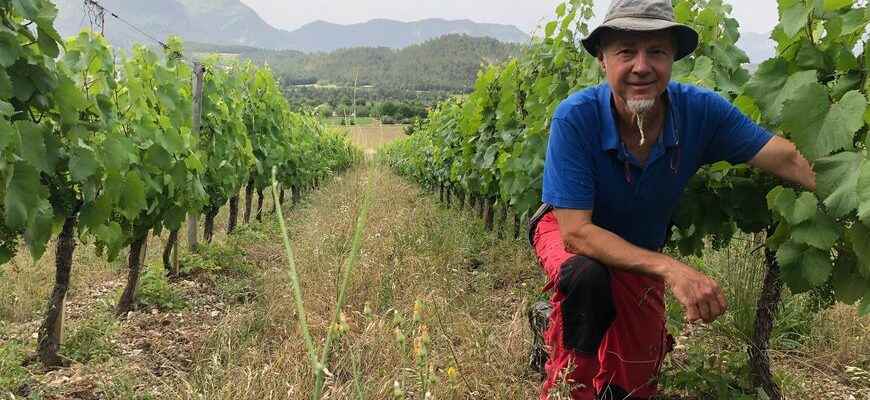Between the rows of vines, in most plots, the ground is bare, not a twig of weed (or good) grass protrudes. On other wine-growing areas, the vegetation is, on the contrary, dense, diverse and maintained. Why this difference? Plants promote biodiversity in the vines, and bring life and wealth to the land. But they can compete with vines in terms of water resources, which can be detrimental to the growth of young vines, particularly in times of drought. There are other arguments for either side, and each type of practice has its pros and cons.
For Jérôme Cayol, from the Maupas estate in Châtillon-en-Diois, the interest of natural grassing is to prevent soil erosion. Its vines, which grow between 500 and 700 meters above sea level, are planted on sloping plots. The flow of rainwater creates gullies which till the soil and do not facilitate the work of the winegrower.
Jérôme Cayol guides us on his different plots and presents the vineyard of Châtillon-en-Diois, one of the smallest in France with 35 hectares and less than ten farmers.
– AW

– AW
